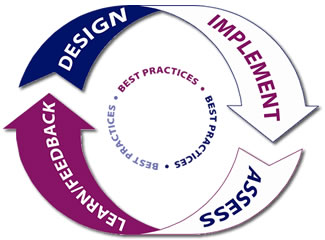 |
  |
|
Best Practice - 3rd Essential Factor - Continuous Improvement Process Only a few companies actually have an effective continuous improvement process. I define an "effective" improvement process as one that produces predictable rates of improvement, that are included in financial planning. A Toyota plan we studied factored in a 10% reduction in production costs year over year into their budgeting - because the know they can get at least this much in the way of imporovements. The process that they used actually targeted a minimum of 1% each month, with weekly improvements expected. By contrast, most of the companies I've studied or worked with seemed to think that "cost cutting" and improvements are the same thing. Most common is not understanding how pivotal the engagement of the work teams are in achieving continuous improvement. These two articles, part of this section of the Best Practices book discuss the underpinnings of a truly effective continuous improvement process, and how it absolutely must rest on a solid foundation of leadership and an effective culture. Continuous Improvement Programs - In this article we’ll explore the “holy grail” of performance improvement – continuous improvement processes or programs that are so well established that their cost improvements, productivity enhancements, and quality improvements occur at a sufficiently predictable rate as to be included in business planning for the company. Article PDF Leadership - The Source of Improvement - What is it that differentiates companies like Toyota, which in 1975 was a maker of junky cars, yet became the largest auto producer in the world, from the also rans.. like Westinghouse, Bendix, Douglas Aircraft? It is leadership that is the primary differentiator, leadership that leads to best practice cultures, and their identifying trait, serious continuous improvements. Article PDF. |